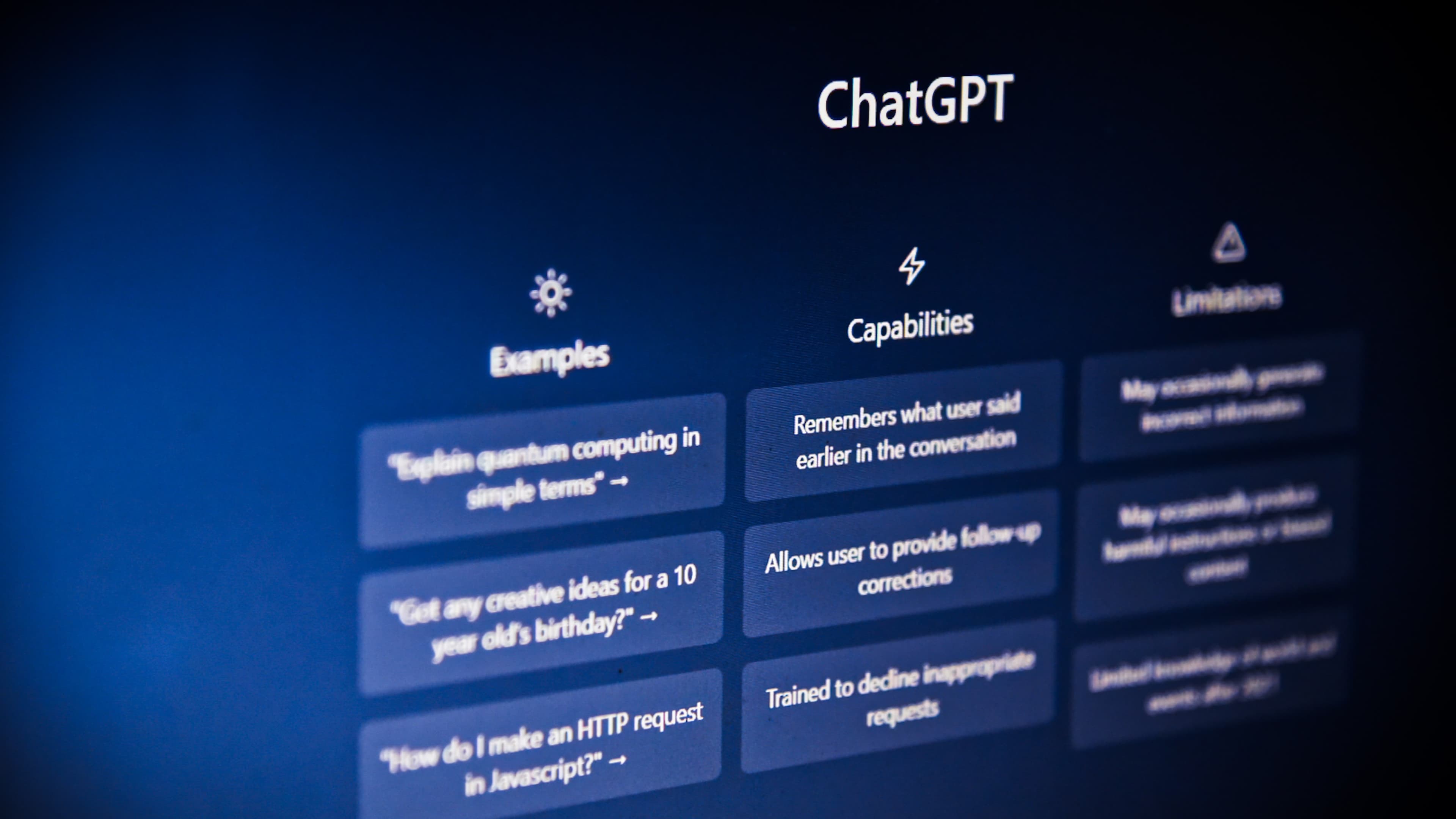You've likely tried ChatGPT and were amazed by its ability to converse like a human. But have you ever found yourself puzzled, wondering why it didn't respond exactly the way you wanted? It might not be ChatGPT's fault; it's all about how you're posing the question.
The art of "prompting" is more than crafting a simple query; it's about knowing how to talk to robots. And it's a skill that goes beyond the present. In a rapidly advancing technological landscape, mastering this dialogue with artificial intelligence won't just be a bonus; it'll be a necessity. From assisting with content creation to extracting insights from data, ChatGPT is a versatile tool that stands ready to revolutionize your workflow. But to truly harness its power, you must learn to prompt effectively.
In this guide, we'll explore the ins and outs of prompting and how you can integrate ChatGPT into different aspects of your personal life and professional workflow. Expect hands-on examples and ready-to-use prompts that will take your ChatGPT experience from good to extraordinary.
Understanding Prompts: Basics Explained
So, let's dive right into the basics of what prompts are and how they guide ChatGPT.
What Are Prompts? Prompts are questions, statements, or instructions you give to ChatGPT. Think of them as the starting point of a conversation. You're essentially telling ChatGPT what you want to know or what you'd like it to do.
How Do Prompts Guide ChatGPT? Imagine you're speaking with a highly intelligent assistant who's ready to help with almost anything. You start with a question or request, and the assistant responds accordingly. That's how ChatGPT works! The prompts you provide shape its responses, guiding it to answer in a way that aligns with your needs.
For example:
Prompt: "Tell me a joke about cats."
ChatGPT's Response: "Why was the cat sitting on the computer? Because it wanted to keep an eye on the mouse!"
The way you phrase your prompt can lead to different responses, allowing you to fine-tune the output to fit your exact requirements. Whether you need creative inspiration, or a sophisticated analysis for your business, understanding prompts is your gateway to harnessing ChatGPT's capabilities.
Prompt Techniques: Strategies with Examples
Unlocking ChatGPT's potential is all about asking the right way. Here's a quick look at some strategies you can employ, along with examples:
Zero-Shot Prompts: Ask without providing specific examples
Example: "Translate the following sentence to French: 'I love to travel.'"
Few-Shot Prompts: Provide examples to guide the response
Example: "If 'happy' means 'content', 'sad' means 'unhappy', then what does 'joyful' mean?”
Role-Based Prompts: Set a scenario or role for ChatGPT
Example: "You are a financial advisor. Explain investment options."
Tonality: Adjust the style (tonality) of the response
Example: For a formal tone suited to business communication, you might ask, "Could you please provide a comprehensive summary of last quarter's sales report?" Conversely, for an informal and friendly tone, you could prompt, "Hey, can you give me the lowdown on how we did with sales last quarter?"
These techniques offer a starting point to tailor ChatGPT to your needs. Experiment with them and discover what works best for you. It's time to make ChatGPT truly yours!
Copy-Paste Toolkit: Ready-to-Use Prompts
As promised at the beginning of this article, we're here to provide you with some ready-to-use prompts that you can easily integrate into your daily personal and professional activities. We've seen how prompts can be artfully crafted, and now it's time to put that knowledge into action. Below, you'll find a collection of tailored prompts for various scenarios. Whether you're looking to write an engaging email, create blog ideas, or even learn something new, these prompts are designed to be a valuable tool in your ChatGPT toolkit:
For Business Operations
Email Copy
You are the marketing manager of XYZ Company, and you need to write an email to a potential client who has shown interest in [specific product, e.g., "smart home solutions"]. Your goal is to set up a meeting to discuss the potential collaboration.Blog Ideas
You are a content creator specializing in the tech industry, targeting [audience, e.g., "beginners in tech"]. Brainstorm blog ideas based on the latest trends such as Artificial Intelligence, 5G, Internet of Things (IoT), and cybersecurity. Ensure the blog topics are engaging, informative, and written in a [tone, e.g., "casual"] style.Report Summary
You will be provided with a quarterly business report. Craft a concise executive summary, no more than [specific length, e.g., "200 words"], highlighting:Key revenue figures and trends, Top-performing products, Major challenges and opportunities, Strategic recommendations for the next quarter.Customer Support
Our brand voice is [describe your brand's voice e.g. friendly, professional, playful, authoritative etc.]. With that in mind, create response templates for the five most common customer inquiries listed below. Each template should reflect our brand's voice and provide a concise, supportive answer.Product Development
You have a deep understanding of how tech companies prioritize product features. Let's review a few hypothetical feature requests and the rationale behind their prioritization: -Dark Mode for App: Prioritized because of user demand and simplicity of implementation. Enhances user experience by offering visual comfort in low-light environments. -Multi-language Support:Prioritized due to expanding into global markets. Essential for ensuring user accessibility and inclusivity. -Augmented Reality (AR) Integration:Lower priority currently due to technological constraints and limited immediate demand. Holds potential for future iterations to enhance user engagement. Given the above, I'm leading the product development for a new e-learning platform. We've received feature requests for: -Gamified Learning Modules:Elements like badges, leaderboards, and quests. -Collaborative Study Rooms:A space where users can study in groups virtually. -AI-powered Study Schedules:Personalized schedules based on user's past behavior. Considering limited resources and wanting to create a strong initial impact, how should we prioritize these features for our MVP (Minimum Viable Product)?Job Description
I'm creating a job description for the Software Engineer position at our company. Craft a job description that aligns with our core values of [e.g., "innovation and teamwork"]. Include the provided details, ensuring the description is clear and engaging.- Positions Title: Software Engineer - Job Summary: Developing and maintaining web applications - Responsibilities and Duties: Writing code, collaborating with the team, testing software, etc. - Qualifications: Bachelor's degree in Computer Science, 3+ years of experience, proficiency in Python and JavaScript - Location and Work Environment: New York City office, possibility of remote work - Compensation and Benefits: $80,000-$100,000 per year, health benefits, retirement plan - Application Process: Send resume and cover letter tohr@company.com- Company Overview: Innovative tech company focusing on cutting-edge solutionsNote: Feel free to enhance the wording and ensure the description is clear and engaging to attract the right candidates.
For Personal Growth and Productivity
Simplifying Complex Concepts
Explain to me how space travel works like I'm five years old.Job Interview Preparation
I have a job interview for a marketing position at a tech company next week. Can you provide me with a list of common interview questions for this role and suggest thoughtful and concise answers that reflect my experience and skills?Language Learning
I want to start learning French for an upcoming trip. Can you provide a beginner's guide that includes basic phrases, grammar rules, and tips for practicing? Include some cultural context to make it more engaging.Personalized fitness guidance
I'm looking to improve my fitness and overall wellbeing but need guidance on creating a sustainable routine. Design a four-week fitness plan that includes a mix of cardio, strength training, flexibility exercises, and mindfulness practices. Please consider that I'm a beginner and have access to a gym.
These examples showcase how carefully crafted prompts can be powerful tools in various domains. Feel free to experiment with them, modify as needed, and discover how you can integrate ChatGPT into different aspects of your personal life and professional workflow.
Do's and Don'ts of Prompting: Tips and Mistakes to Avoid
Crafting the perfect prompt might seem simple, but there are essential best practices and common pitfalls to be aware of. Here, we'll outline the practical guidance to get the most out of ChatGPT.
Do's:
Be Specific and Clear: Provide enough context and detail in your prompt to guide ChatGPT toward the desired response.
Good Example: "Summarize the key findings of this scientific report, focusing on the main conclusions and recommendations."
Bad Example: "Tell me about this report."
Utilize N-Shot Techniques when Appropriate: Few-shot or zero-shot prompting can be effective for specific tasks. Understand when to use each.
Good Example: "Here are three customer reviews about Product X. Review 1: Positive... Review 2: Negative... Based on these, what could be improved in the product?"
Bad Example: "Tell me what can be improved about the product."
Mind the Tone: If a particular tone or style is needed, specify it within the prompt.
Good Example: "Write a formal email to introduce our new services, using a professional and courteous tone."
Bad Example: "Write an email to introduce our new services."
Don'ts:
Avoid Ambiguity: Vague or overly broad prompts can lead to unexpected or off-target responses.
Good Example: "Assist me in drafting a business proposal for a new eco-friendly packaging solution targeted at mid-sized e-commerce businesses. Include an introduction, problem statement, solution overview, benefits, pricing strategy, and a conclusion."
Bad Example: "Help me write a business proposal."
Don't Overcomplicate: Complex, run-on sentences can confuse the model.
Good Example: "Summarize the key points discussed in last week's sales meeting regarding the new project based on the information provided."
Bad Example: "Provided the following information, write about the meeting we had last week with the sales team, the clients, and the vendors about the new project with all the details."
Avoid Over-Prompting: Too much information can lead to a loss of focus on the main task.
Good Example: "Provide an overview of the company's current financial situation.”
Bad Example: "Describe the company's financial situation, employee satisfaction, product line, marketing strategy, customer feedback, and future plans.”
By adhering to these practical do's and don'ts, you'll be well on your way to crafting effective and efficient prompts, maximizing the potential of ChatGPT for your personal or business needs. The art of prompting is one of finesse and understanding, and these tips will guide you to mastery. Whether for crafting an email, generating creative content, or interpreting complex data, the right prompt can unlock a world of possibilities.
Conclusion
Embracing AI and tools like ChatGPT is not just about being technologically advanced; it's about enhancing efficiency, creativity, and decision-making in your everyday tasks. Whether you're drafting emails, analyzing trends, or seeking to understand complex concepts, the right prompt can transform a vague idea into a clear, actionable insight.
Remember, these techniques and examples are merely a starting point. The true power of prompting lies in experimentation and adaptation to your unique needs and objectives. So go ahead, play around with the prompts, modify them to fit your context, and discover the endless possibilities that await you.
And most importantly, don't be afraid to make mistakes! Every misstep is a step towards mastery, and every question is an opportunity to learn.
So why wait? Integrate ChatGPT into your workflow today, and start making the most of this incredible tool.


